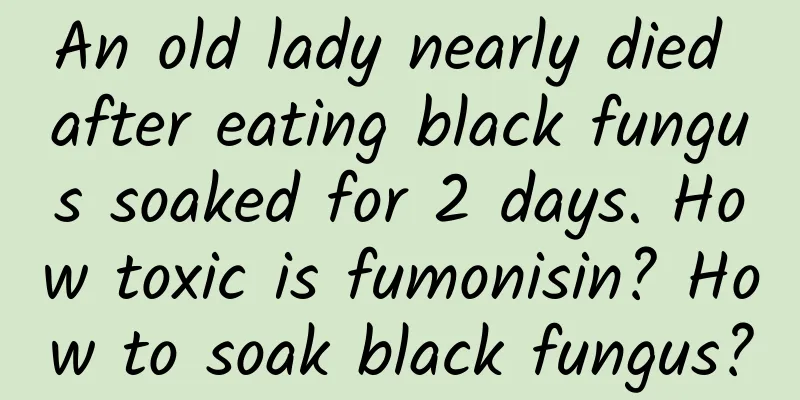If you have "red blood vessels" in this area and leave it alone, it will really cause trouble!

|
The hot summer is here, and it's time to show off your body. However, for some people, this season brings troubles. They dare not show their legs confidently and can only wear long pants every day. The reason is that some people's legs are covered with bloodshot, and some people's leg veins are like "earthworms"... What is going on? In fact, this is all caused by varicose veins in the lower limbs. It not only affects the appearance, but may also cause pain and other health problems. Today we will take a closer look at what other problems varicose veins in the lower limbs can cause. Varicose veins of the lower limbs Gradually finding young people Varicose veins of the lower limbs refer to the phenomenon that the blood return of the leg veins is blocked due to venous valve insufficiency, causing the veins to dilate and twist. Varicose veins occur because the valves in the veins cannot close normally, causing blood to flow back and accumulate, which increases the pressure on the vein walls and ultimately causes the veins to dilate and deform. It is a relatively common venous disease in life. According to the "2021 Varicose Vein Internet Health Insight Report", the number of patients with varicose veins in the lower limbs in my country has shown a significant upward and younger trend in recent years, but the incidence of new cases continues to increase; based on online user surveys, patients aged 18 to 35 account for more than 60%, and varicose veins in the lower limbs have quietly found young groups. Usually, we see that people with varicose veins have obvious purple varicose veins on their legs, sometimes accompanied by soreness, pain and other discomfort. So what exactly causes varicose veins in the lower limbs? Copyright images in the gallery. Reprinting and using them may lead to copyright disputes. First, age is one of the important risk factors for varicose veins in the lower extremities. As people age, the elasticity of the venous walls and venous valves gradually weakens, resulting in obstructed blood return and blood congestion, which in turn causes varicose veins. Studies have shown that the risk of varicose veins in people over the age of 65 increases significantly. Secondly, gender is also an important factor affecting varicose veins in the lower limbs. Women are generally at higher risk of varicose veins in the lower limbs than men, which is related to changes in hormone levels in women, especially during pregnancy. Changes in hormones in the body can cause vein dilation and increased pressure, thereby increasing the risk of disease. Of course, occupation is also an important factor. For occupations that require long periods of standing or sitting, such as teachers, nurses, and factory workers, the pressure on the veins in the lower extremities increases due to gravity, and maintaining this state for a long time can cause varicose veins. Studies have shown that the nature of occupation is closely related to the incidence of varicose veins in the lower extremities. In addition, people with obesity and high body mass index (BMI) are also prone to varicose veins in the lower limbs. Weight gain increases the pressure on the lower limbs, causing the vein walls and venous valves to bear a greater load, which in turn leads to the occurrence of varicose veins. Finally, family history is also a factor that cannot be ignored. If there is a history of varicose veins in the family, the individual's risk of disease will also increase, indicating that genetic factors play an important role in the occurrence of varicose veins in the lower limbs. Certain gene mutations, such as FOXC2, TM and C677TMTHFR genes, are also associated with the development of varicose veins. Taking all the above factors into consideration, there are many causes of varicose veins in the lower limbs. Understanding these causes will help us take appropriate preventive measures and reduce the risk of disease. If left unchecked, it will cause serious harm! The symptoms of varicose veins in the lower limbs are not obvious at the beginning. We should pay attention to the early signs of varicose veins in the lower limbs, such as leg soreness and discomfort after standing or sitting for a long time, especially at night or after long-term activities, and the feeling of heaviness and fatigue in the legs. In the beginning, it is just the dilation of capillaries in the legs, which may appear like bloodshot changes, which are easy to be ignored. Copyright images in the gallery. Reprinting and using them may lead to copyright disputes. However, if left untreated, it may lead to serious consequences, such as ulcers, rashes, phlebitis and other changes, which not only affect the appearance but also limit a person's ability to walk. Clinically, the entire progression is divided into 6 stages, called the CEAP classification, as follows: C1: Telangiectasia or reticular veins C2: Varicose veins C2r: Recurrent varicose veins C3: Edema. C4: Changes in the skin and subcutaneous tissue due to chronic venous disease C4a: Hyperpigmentation or eczema C4b: Fat sclerosis or white atrophy C4c: Coronaphlebectatica C5: Healing venous ulcer C6: Active venous ulcer C6r: Recurrent active venous ulcer You can refer to this picture. Source: Internet How to deal with varicose veins in the lower limbs correctly? When facing varicose veins in the lower limbs, it is important to prevent them in advance and start from daily life to avoid increasing the risk of varicose veins in the lower limbs. 1 Daily prevention is very important ① Maintaining proper exercise can help promote blood circulation and reduce venous pressure. You can choose low-intensity aerobic exercises such as walking, swimming or cycling, and avoid standing or sitting for a long time. Copyright images in the gallery. Reprinting and using them may lead to copyright disputes. ②Controlling weight is also crucial. Obesity will increase the burden on the veins in the lower limbs, thereby increasing the risk of disease. ③ Wear comfortable shoes and loose clothes, avoid tight clothes that restrict your legs. Raise your legs when sleeping to promote venous return and reduce venous pressure. 2 Patients with symptoms If you already have symptoms of varicose veins in your lower extremities, mild cases can be relieved by wearing medical compression stockings. These stockings provide moderate pressure to help venous return and reduce swelling and discomfort. For moderate cases, sclerotherapy injections can be considered. They seal diseased veins with medications to prevent blood from entering these veins, thereby reducing varicose veins and symptoms. Sclerotherapy injections are a minimally invasive treatment that is usually effective with a short recovery time. 3 Patients with severe symptoms For patients with severe symptoms, surgical treatment may be a necessary option. Laser therapy is a common minimally invasive surgical method that uses laser energy to close the diseased veins, with significant results and quick recovery. In addition, venous stripping is also a traditional surgical method that surgically removes the diseased venous segment to achieve the purpose of treatment. Although surgical treatment has a lower risk, it still needs to be performed under the guidance of a professional doctor. In short, scientific prevention and reasonable treatment measures can effectively relieve the symptoms of varicose veins in the lower limbs and improve the quality of life. By maintaining good living habits and taking medical interventions in time, most patients can avoid worsening of the disease and enjoy healthy legs. Understanding and paying attention to varicose veins in the lower limbs can help us detect problems early, take correct actions, and protect the health of our legs. References [1] Ali Health Research Institute, CBNDATA. 2021 Varicose Veins Internet Health Insight Report. 2021.07.21 [2]AslamMR,MuhammadAsifH,AhmadK,etal.Globalimpactandcontributingfactorsinvaricoseveindiseasedevelopment.SAGEOpenMed.2022;10:20503121221118992. [3] Chen Xiaoping, Wang Jianping, Zhao Jizong. Surgery (9th edition). Beijing: People's Medical Publishing House. 2018. [4]LurieF,PassmanM,MeisnerM,etal.The2020updateoftheCEAPclassificationsystemandreportingstandards.JVascSurgVenousLymphatDisord.2020;8(3):342-352. [5] Chinese Medical Doctor Association, Vascular Surgery Branch, Phlebology Group. Diagnosis and treatment guidelines for common venous diseases (2022 edition). Chinese Journal of Vascular Surgery, 2022, 07(1): 12-29. Planning and production Author: Jiang Yongyuan, Master of Internal Medicine, Third Military Medical University Review | Feng Jun, deputy chief physician of the Dermatology Department of Sinopharm Tongmei General Hospital |
<<: Nature: The secret of crying? Babies cry → mothers release oxytocin | World Breastfeeding Week
Recommend
How to use sanitary napkin pads? These matters should be noted
Panty pads are an item that women need to use whe...
This fruit is now on the market in large quantities! But be careful of "poisoning" if you eat too much, it can be fatal!
It’s the season for eating lychees again. As the ...
Why do I sweat while sleeping during the confinement period?
Women sweat a lot during the confinement period. ...
Left breast pain
Recently, many female friends have reported that ...
How to choose hand cream for pregnant women
Nowadays, many people pay attention to skin care....
Bleeding again half a month after miscarriage
In life, many people choose to have an abortion d...
Precautions and conditioning after medical abortion
Medical abortion is simple and convenient to use....
Hungry and no appetite during early pregnancy
In the early stages of pregnancy, due to changes ...
How to pass the fetal heart monitoring test
When girls do fetal heart monitoring during pregn...
Why do eggs smell even though they are not bad? What is the difference between selenium-enriched eggs and ordinary eggs?
Eggs contain a lot of protein, which will increas...
Does the induction cooker have any effect on pregnant women?
Induction cookers are used quite frequently in ou...
Fat particles on the face during pregnancy
During pregnancy, the growth and development of t...
What is follicle aging?
Ovarian follicles are a relatively common problem...
Can I drink beer three or four days after my period?
Can women drink beer during menstruation? Beer is...
Signs of twins
Many people hope to give birth to twins, a boy an...









